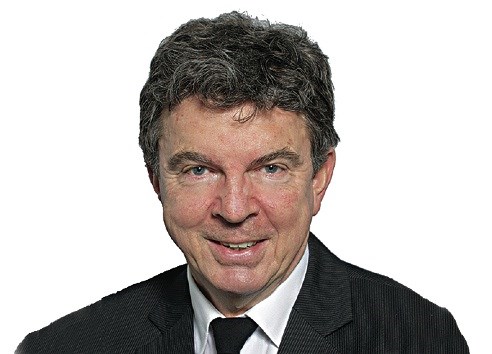Health Minister Terry Lake has been fielding questions lately about curtailments and extra costs for patients.
He’d better get used to it.
Some of the changes in question are flowing from budgets given to the various health authorities that are a lot more generous this year than they will be in the next two years.
“Bending the curve” of health care costs — meaning slowing the never-ending rate of increase — involves holding the frontline providers to some pretty measly increases in the next two years.
The Fraser Health Authority, for example, has prompted a fuss over its wheelchair fees for residential-care patients. That idea is coming in a year when they are expecting a 5.6 per cent increase in their operating budget.
But next year they are expecting a 4.9 per cent increase and the year after a 2.5 per cent increase.
If they’re talking about charging for wheelchairs with a 5.6 per cent hike, it makes you wonder what’s coming in two years, when they have to get by with a 2.5 per cent lift.
Similarly, the 91ԭ�� Island Health Authority has curtailed some laboratory services at a time when they’re dealing with a 5.2 per cent increase. Next year, the budget is slated to be 1.8 per cent higher, and 2.2 per cent higher the year after.
The Opposition on Wednesday focused on the $25 monthly wheelchair charge, based on a freedom-of-information request by 91ԭ�� reporter Bob Mackin. It produced a briefing note suggesting it was the Ministry of Health’s idea, as much as the health authority’s.
They had a proposal in the works, but the note says the ministry requested them to “implement wheelchair maintenance fees” to align with a similar proposal elsewhere.
Lake said the government’s main idea was to introduce some consistency to the current patchwork system, where some facilities charge and some don’t. And there’s no threat to low-income residents, as fees will be waived if they can’t afford them.
The charge has always been allowed under the regulations governing assisted-living facilities, but some authorities don’t bother applying it.
The note shows the idea was marked on 17 different criteria and scored a -13, which doesn’t exactly qualify it as a “stroke of genius.”
Nonetheless, it could bring in $300,000 in the next two years.
The previous day, Lake was defending the lab-services cuts by the 91ԭ�� Island Health Authority.
A few smaller labs are cutting hours because they were only handling a handful of people a day.
Lake had an observation when asked about the reduction.
“When services are added, no one scrums me to ask: ‘Why are you adding all those services?’ Sometimes when demand goes down, services are reduced. That’s the responsible thing to do.”
Lake said the government pays for 41 million outpatient lab tests a year. That’s 61 per cent more than 10 years ago, and more than other provinces.
“We don’t view that as sustainable into the future.”
Apart from VIHA’s move, an overall review of lab services is underway, because the government thinks the current system blocks any savings.
He said government has no ability to take advantage of technological change that makes for cheaper tests.
He plans to legislate changes that will make for better co-ordination and improved efficiency. Lake told reporters Wednesday that his ministry is talking about wheelchair fees with other health authorities as part of the move for consistency.
Overall, the continued pressure to bend the curve means “innovation, creativity and managing costs.”
The Opposition has seized on “Christy Clark’s wheelchair tax” since independent MLA Vicki Huntington brought it to light last month.
New Democrat Leader Adrian Dix said the government gave approval to health authorities to charge for wheelchairs three years ago. But no one took them up on it, “because it’s a lousy, unfair idea.”
It was also an adroitly timed one.
The briefing note said they were going to give notice of the charge on April 1. But it didn’t come to light until after the election.



